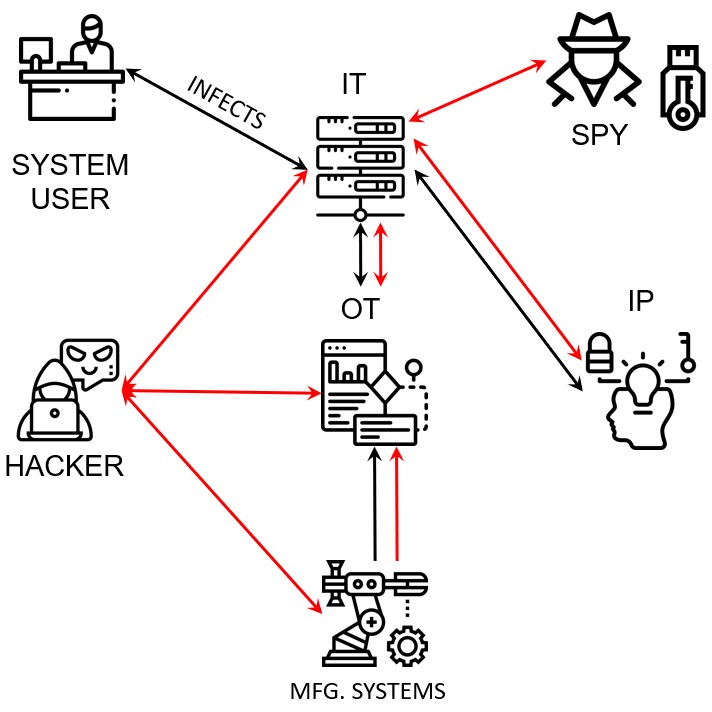
If we will gather increased information from the factory floor, customers, supply chains, and quality, we better make sure we have a handle on cybersecurity. In 2019 there were 3800 publicly exposed data breaches. These exposed 4.1 billion records and data breaches have increased by 54% over 2018. Ouch!
According to IBM and the Poneman Institute, each data breach costs $3.9 million dollars. Realize that your company must protect a wide network of computers and systems while a hacker only has to find the weakest link to enter the network.
This is compounded because the lifecycle of machinery runs about 26 to 34 years. Some of this equipment is still using Windows XP which hasn’t been supported since 2014!
In a previous blog post, I mentioned that many supply chain activities will take place using blockchain technology. All the computers that will make up the supply chain network will be referred to as a DSN or Digital Supply Network. Constant communication across this broad DSN network means there will be multiple opportunities for outside entry. Cybersecurity will be key to protecting the supply chain.

We are all familiar with IT or Information Technology. The infrastructure to capture information from the shop floor will be referred to as OT or Operational Technology. In Industry 4.0 these technologies will have to communicate and work together to protect your IP or Intellectual Property. For most manufacturers, this is the information that a hacker is after.
Drawings, programs, patents, trade secrets, are all artifacts that are enticing to outside hackers. This infographic explains how hackers can enter the system.

Eucalyp, freepik, smashicons
Outside attacks focused upon the IT systems, OT system, and the manufacturing systems if successful can provide access to Intellectual property.
In my research, I want to point out that one of the easiest ways to enter your systems is through malicious CAD files. These CAD files use a Visual Basic script to weaken the security for future attacks. They are also used to steal intellectual property. They can search for certain file extensions within an email server and route those files to an additional e-mail address. This leads to counterfeit goods being produced to the tune of $250 billion every year.
Here are five basic steps you can take to safeguard your systems:
1. Restrict User Access and Permissions
Only grant access to trusted sources and grant the most restrictive access possible. If employees need access to confidential files, consider granting read-only access.
2. Enforce Domain and Network restrictions
The purpose of having IT and OT systems communicate is to increase efficiency and real-time performance data. That does not mean that every available computer in your building needs access to the OT systems. It’s great that machines can communicate, but limit who can view the communication.
3. Account for assets connected to the IT systems
The assets that get connected to the IT systems should be accounted for. That includes the machine assets which are also IT assets. It is important to develop a Smart Value Stream® Map to identify systems, software, and protocols across your entire factory.
4. Conduct User Education
Educate employees on the importance of protecting documents that contain intellectual property and sensitive information.
5. Make Security a requirement
When purchasing new equipment make security a priority. Machinery lifecycles run 26 to 34 years. Make sure cybersecurity is integrated into the machinery you consider purchasing.
I hope this provides you with information to consider as you begin your Industry 4.0 implementation.
As always it is an honor serving you and I hope that you and your company are getting better every day!
Follow me on Twitter
Join me on LinkedIn
Listen to the podcast here

